Are you considering installing a packaged sewage treatment plant but don’t know where to start? Look no further! In this comprehensive guide, we will provide you with all the information you need to know about packaged sewage treatment plants. Whether you are a homeowner, developer, or business owner, understanding the basics of these systems is crucial for making informed decisions.
From the importance of wastewater treatment to the benefits of packaged sewage treatment plants, we will cover it all. You’ll learn about the different types of packaged sewage treatment plants available in the market and how they work through the wastewater treatment plant process. We will also discuss the factors to consider when choosing the right system for your needs, such as capacity, maintenance requirements, and cost.
Additionally, we will dive into the installation process and provide helpful tips to ensure a smooth and successful setup. With our expert guidance, you’ll be equipped to navigate the world of packaged sewage treatment plants and make choices that align with your specific requirements.
So, let’s get started on your journey to understanding and implementing packaged sewage treatment plants for your property or project.
Also Read More About India’s Top Most Packaged Sewage Treatment Plant from here-
How Do Packaged Sewage Treatment Plants Work?
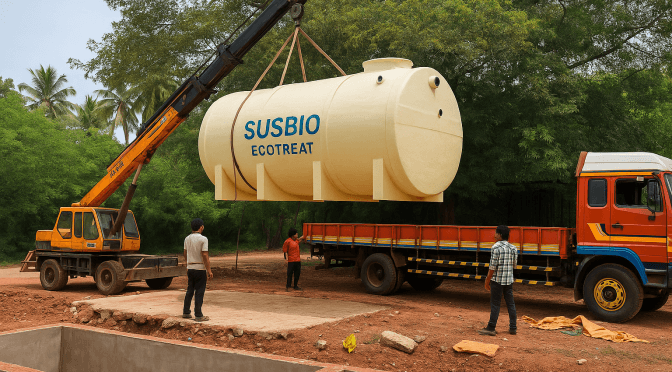
Packaged sewage treatment plants are self-contained, pre-engineered systems designed to treat wastewater generated from residential, commercial, or small-scale industrial properties. These compact and efficient systems use a combination of physical, biological, and chemical processes to effectively remove contaminants from the wastewater, making it safe for discharge or reuse. For residential water treatment, packaged STPs are an excellent solution, ensuring that households have access to clean, treated water for non-potable uses like landscaping, while also reducing the environmental impact of wastewater.
At the heart of a packaged sewage treatment plant is the biological wastewater treatment process, which utilizes aerobic bacteria to break down and digest the organic matter in the wastewater. This is typically achieved through an aeration chamber, where the wastewater is mixed with air to provide the necessary oxygen for the bacteria to thrive. As the bacteria consume the organic matter, they produce a clarified liquid effluent that can be safely discharged or further treated for reuse.
The packaged system also includes other essential components, such as a primary settling tank, where larger solids are allowed to settle out, and a secondary clarifier, where the treated effluent is separated from the remaining sludge. The sludge is then periodically removed and either disposed of or further processed, depending on local regulations and the specific design of the system. The treated effluent is then disinfected, usually through chlorination or UV light, to ensure it meets the required water quality standards before being discharged or reused.
Advantages Of Packaged Sewage Treatment Plants?
One of the primary advantages of packaged sewage treatment plants is their compact and modular design, which makes them a versatile solution for a wide range of applications. These systems are typically pre-fabricated in a factory setting, allowing for efficient and consistent manufacturing, as well as easy installation on-site. This modular approach also enables the systems to be easily scaled up or down to accommodate varying wastewater flow rates and treatment requirements, making them suitable for both small residential properties and larger commercial or industrial facilities.
Another key advantage of packaged sewage treatment plants is their high level of efficiency and reliability. These systems are engineered to operate with minimal maintenance and supervision, often requiring only periodic inspections and routine servicing to ensure optimal performance. This can be particularly beneficial for remote or decentralized locations where access to traditional wastewater treatment infrastructure may be limited or costly to install and maintain.
Additionally, packaged sewage treatment plants offer a more environmentally friendly solution compared to traditional septic systems or discharging untreated wastewater. By effectively removing contaminants and pathogens from the wastewater, these systems help to protect local water bodies, groundwater, and the surrounding ecosystem from pollution. This aligns with the growing emphasis on sustainable and responsible wastewater management practices, making packaged sewage treatment plants an attractive option for those seeking to minimize their environmental impact.
Components of Packaged Sewage Treatment Plants
Packaged sewage treatment plants typically consist of several key components that work together to effectively treat the wastewater. These components may vary depending on the specific design and manufacturer, but generally include the following:
- Inlet Pipe: This is the entry point for the raw wastewater entering the system, often connected to the building’s plumbing or a collection tank.
- Primary Settling Tank: The first stage of the treatment process, primary wastewater treatment, where larger solids and sediment are allowed to settle out of the wastewater, reducing the load on the subsequent treatment stages.
- Aeration Chamber: This is the heart of the biological treatment process, where air is introduced into the wastewater to facilitate the growth and activity of the aerobic bacteria responsible for breaking down organic matter.
- Secondary Clarifier: After the biological treatment, the treated wastewater enters the secondary clarifier, as part of secondary wastewater treatment, where any remaining suspended solids are allowed to settle out, producing a clear, treated effluent.
- Disinfection Unit: The treated effluent is then disinfected, typically through chlorination or UV light treatment, to kill any remaining pathogens and ensure the water meets the required quality standards for discharge or reuse.
- Control Panel: This electronic component monitors and controls the operation of the various system components, ensuring the plant runs efficiently and effectively.
- Sludge Handling System: The excess sludge generated during the treatment process is periodically removed and either disposed of or further processed, depending on local regulations and the specific design of the system.
The specific configuration and inclusion of these components may vary depending on the manufacturer, the size and capacity of the packaged sewage treatment plant, and the specific wastewater treatment requirements of the site.
Common issues and troubleshooting tips for packaged sewage treatment plants
While packaged sewage treatment plants are generally designed for reliable and low-maintenance operation, there are some common issues that may arise, and it’s important to be aware of potential troubleshooting steps. Some of the most common issues and their corresponding troubleshooting tips include:
- High Effluent Turbidity or Suspended Solids: This may indicate issues with the settling or clarification processes. Possible solutions include checking the sludge levels in the clarifier, adjusting the aeration or mixing, or performing a more thorough cleaning of the system.
- Foul Odors: Unpleasant odors can be a sign of imbalances in the biological treatment process, such as insufficient aeration or an overload of organic matter. Troubleshooting steps may include adjusting the aeration system, increasing the frequency of sludge removal, or checking for any blockages or leaks in the system.
- Excessive Foaming: Excessive foam production can indicate issues with the biological treatment process, such as an imbalance in the microbial population or the presence of detergents or other foaming agents in the wastewater. Adjusting the aeration rate, adding anti-foam agents, or investigating the source of the foaming agents may help resolve the issue.
- High Energy Consumption: If the packaged system is consuming more energy than expected, it could be due to issues like malfunctioning aeration blowers, inefficient control systems, or the need for system optimization. Reviewing the system’s energy usage, checking for any equipment malfunctions, and consulting with the manufacturer or a service technician can help identify and address the problem.
- Frequent Equipment Failures: Recurring issues with components like pumps, valves, or sensors may indicate the need for more robust equipment, improper installation, or the need for more frequent maintenance. Consulting with the manufacturer or a qualified service provider can help determine the root cause and implement appropriate corrective actions.
- Regulatory Non-compliance: If the treated effluent fails to meet the required water quality standards, it may be necessary to review the system’s design, operating parameters, and maintenance practices to identify the source of the problem. Adjustments to the treatment process, upgrades to the system, or changes in operational procedures may be required to ensure compliance.
By being proactive in monitoring the system’s performance, addressing any issues promptly, and following the manufacturer’s recommended maintenance protocols, property owners or operators can help ensure the long-term reliable operation of their packaged sewage treatment plant.
Choosing the right packaged sewage treatment plant for your needs
When selecting a packaged sewage treatment plant, there are several key factors to consider to ensure you choose the right system for your specific needs. These factors include:
- Wastewater Flow Rate: Accurately determining the expected daily or peak wastewater flow rate is crucial in selecting the appropriate size and capacity of the packaged system. Underestimating the flow rate can lead to overloading and poor treatment performance, while oversizing the system can result in unnecessary costs.
- Wastewater Characteristics: The composition and contaminant levels of the wastewater can vary depending on the source (e.g., residential, commercial, or industrial). Understanding the specific characteristics of the wastewater is essential in choosing a system that can effectively treat the pollutants present.
- Treatment Requirements: Local regulations and environmental standards will dictate the required level of wastewater treatment, such as the allowable limits for parameters like biochemical oxygen demand (BOD), total suspended solids (TSS), and pathogen levels. Selecting a system that can meet these treatment requirements is crucial.
- Available Space: Packaged sewage treatment plants come in a range of sizes, and the available space on the property or project site will influence the system’s physical footprint and layout requirements. Ensuring the system can be properly accommodated is important for a successful installation.
- Maintenance and Operational Considerations: Some packaged systems may require more frequent maintenance or specialized expertise to operate, which can impact the long-term costs and feasibility for the property owner or operator. Evaluating the system’s maintenance requirements and ease of use is essential.
- Energy Efficiency: The energy consumption of the packaged system can have a significant impact on operating costs, particularly in areas with high electricity rates. Comparing the energy efficiency of different systems can help optimize the total cost of ownership.
- Cost: The initial capital cost of the packaged system, as well as the ongoing maintenance and operational expenses, should be carefully evaluated to ensure the system fits within the project’s budget and provides a good return on investment.
By carefully considering these factors, you can select the most appropriate packaged sewage treatment plant for your specific needs, ensuring efficient and reliable wastewater treatment for your property or project.
Regulations and permits for packaged sewage treatment plants
The installation and operation of packaged sewage treatment plants are subject to various regulations and permitting requirements, which can vary significantly depending on the location and the specific characteristics of the wastewater being treated. It is essential to research and comply with the applicable local, state, and federal regulations to ensure the system’s legality and environmental compliance.
Some of the common regulatory requirements and permitting processes that may apply to packaged sewage treatment plants include:
- Environmental Protection Agency (EPA) Regulations: The EPA sets national standards for wastewater treatment and discharge, which may include requirements for effluent quality, monitoring, and reporting. Depending on the system’s size and the nature of the wastewater, the packaged treatment plant may need to comply with the EPA’s National Pollutant Discharge Elimination System (NPDES) permit program or other relevant regulations.
- State and Local Regulations: Many states and local municipalities have their own additional regulations and permitting requirements for packaged sewage treatment plants, which may include building permits, operating licenses, and specific water quality standards. It is crucial to research and comply with these regional regulations to ensure the system’s legality and avoid potential fines or legal issues.
- Health Department Approvals: Depending on the application, the packaged sewage treatment plant may need to be approved by the local health department or other regulatory agencies responsible for public health and safety. This may involve submitting plans, obtaining permits, and undergoing inspections to ensure the system meets the required sanitation and public health standards.
- Zoning and Land Use Permits: The installation of a packaged sewage treatment plant may also require obtaining the necessary zoning or land use permits from the local planning or building authorities, particularly if the system is being installed in a residential or commercial area with specific land use regulations.
- Ongoing Monitoring and Reporting: Once the packaged sewage treatment plant is operational, there may be ongoing monitoring and reporting requirements, such as regular water quality testing, maintenance logs, and submitting periodic reports to the regulatory agencies. Failure to comply with these requirements can result in fines or other enforcement actions.
It is essential to consult with the relevant regulatory authorities early in the planning process to understand the specific requirements and obtain the necessary permits and approvals for the installation and operation of the packaged sewage treatment plant. Engaging with experienced professionals, such as engineers or environmental consultants, can also help ensure compliance and a smooth permitting process.
Comparing packaged sewage treatment plants to other wastewater treatment options
When considering wastewater treatment solutions for residential, commercial, or small-scale industrial properties, packaged sewage treatment plants are often compared to other options, such as traditional septic systems and centralized municipal wastewater treatment facilities. Each of these approaches has its own advantages and disadvantages, and the choice will depend on the specific needs and constraints of the property or water treatment plant project.
Traditional Septic Systems:
Septic systems are a common wastewater treatment solution for properties not connected to a centralized sewer system. These systems typically consist of a septic tank and a drainage field or leach field, where the wastewater is treated through a combination of physical, biological, and chemical processes. While septic systems can be a cost-effective option for small-scale applications, they generally have limited treatment capabilities, require larger land areas, and may have higher maintenance requirements compared to packaged sewage treatment plants.
Centralized Municipal Wastewater Treatment Facilities:
For properties located in areas with access to municipal sewer systems, the wastewater can be directed to a centralized wastewater treatment facility operated by the local government or a utility provider. These large-scale facilities often employ more advanced treatment technologies and can handle larger volumes of wastewater than packaged systems. However, connecting to a centralized system may not be feasible or cost-effective for properties in remote or decentralized locations, and the property owner may have less control over the treatment process.
Packaged Sewage Treatment Plants:
Packaged sewage treatment plants offer a middle ground between traditional septic systems and centralized municipal treatment facilities. These self-contained, pre-engineered systems can provide a higher level of wastewater treatment than septic systems, while also being more compact, modular, and suitable for smaller-scale applications than centralized facilities. Packaged systems can be particularly advantageous for properties in areas without access to municipal sewer infrastructure, as they can be installed on-site and operated independently. Additionally, packaged systems often have lower installation and maintenance costs compared to connecting to a centralized treatment facility.
The choice between these wastewater treatment options will depend on factors such as the property’s location, the volume and characteristics of the wastewater, the available land area, local regulations, and the overall budget for the project. By carefully evaluating the advantages and limitations of each approach including tertiary wastewater treatment property owners or developers can make an informed decision that best meets their specific needs and environmental considerations.
Installation and maintenance of packaged sewage treatment plants
The installation of a packaged sewage treatment plant typically involves several key steps to ensure proper integration with the site’s infrastructure and compliance with local regulations. The process generally includes the following:
- Site Preparation: This involves excavating the necessary space for the system, ensuring proper drainage and access, and preparing the foundation or mounting surface for the packaged unit.
- System Delivery and Placement: The pre-fabricated packaged system is delivered to the site and carefully positioned in the prepared location, often with the assistance of specialized equipment like cranes or forklifts.
- Plumbing Connections: The inlet and outlet pipes of the packaged system are connected to the building’s plumbing or the existing wastewater collection and discharge infrastructure.
- Electrical Connections: The system’s control panel and other electrical components are wired to the site’s power supply, ensuring the proper voltage and grounding requirements are met.
- Commissioning and Start-up: Once the physical installation is complete, the packaged system is commissioned and started up, with the manufacturer’s technicians or a qualified installer verifying the proper operation of all components and making any necessary adjustments.
- Regulatory Inspections: Depending on local requirements, the installed packaged system may need to undergo inspections and approvals from regulatory authorities, such as the environmental protection agency or the local health department, before it can be put into operation.
Proper maintenance is crucial for ensuring the long-term performance and reliability of a packaged sewage treatment plant. Typical maintenance tasks include:
- Regular Inspections: Periodic visual inspections of the system’s components, such as the inlet, aeration chamber, clarifier, and disinfection unit, to identify any potential issues or needed repairs.
- Routine Servicing: Scheduled maintenance tasks, such as cleaning filters, checking and replacing worn parts, and adjusting system settings, as recommended by the manufacturer.
- Sludge Management: Regular removal and disposal or further processing of the excess sludge generated during the treatment process, in compliance with local regulations.
- Monitoring and Record-keeping: Maintaining detailed records of the system’s performance, including flow rates, treatment efficiency, and any issues or corrective actions taken, to ensure compliance and optimize the system’s operation.
- Troubleshooting and Repairs: Promptly addressing any malfunctions or performance issues that may arise, either through the manufacturer’s support or by engaging a qualified service technician.
By following the manufacturer’s recommended maintenance procedures and guidelines, property owners or operators can ensure the long-term reliable operation of their packaged sewage treatment plant and minimize the risk of costly breakdowns or environmental compliance issues.
Why Choose SUSBIO ECOTREAT for Your Sewage Treatment Needs?
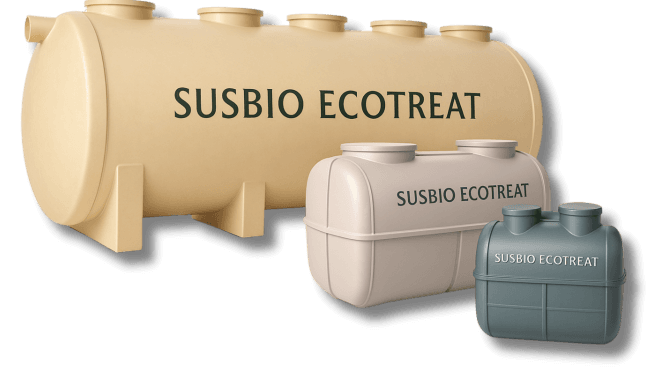
The SUSBIO ECOTREAT is the perfect solution for modern sewage treatment, combining innovation, efficiency, and sustainability in one advanced system. Built with high-quality fiber-reinforced plastic (FRP), it ensures strength and long-lasting durability. Here’s what sets it apart:
Key Features:
- Advanced Dual Treatment Process: Combines anaerobic and aerobic treatment for effective pollutant removal.
- Energy Efficiency: Up to 90% energy savings due to smart automation and low electricity consumption.
- Cost-Effective: Minimal operating costs with no need for full-time staff.
- Space-Efficient Design: The compact, prefabricated modular layout saves space and fits various applications.
- Easy Installation & Maintenance: Plug-and-play model for quick setup, reducing labor and installation costs.
- Customizable for Different Needs: Adaptable to any project size or type, including domestic sewage treatment plants.
- No Sound Technology: Operates quietly, suitable for urban and residential areas.
How It Works:
The SUSBIO ECOTREAT Sewage Treatment Plant is meticulously designed for efficient wastewater treatment. It starts with a detailed analysis of the incoming wastewater, targeting pollutants like COD and BOD. The plant’s dual-treatment process improves efficiency and sustainability, while advanced automation helps to minimize energy consumption.
Prefabricated, Plug-and-Play Design:
What makes SUSBIO ECOTREAT truly unique is its prefabricated and modular design, which allows for hassle-free installation. The FRP construction is robust, ensuring longevity and minimal maintenance needs. This plug-and-play sewage treatment system arrives ready for quick installation, reducing both time and labor costs, making it an excellent choice for municipalities and industries.
FULLY AUTOMATIC AND NO ONSITE OPERATOR REQUIRED
A key feature of the SUSBIO ECOTREAT Sewage Treatment Plant is that it’s fully automatic and doesn’t need an on-site operator. Made from durable fiber-reinforced plastic (FRP), this prefabricated sewage treatment solution uses advanced technology for easy operation.
90% LESS ELECTRICITY CONSUMPTION AND NOISELESS STP
The SUSBIO ECOTREAT Sewage Treatment Plant is designed to be both energy-efficient and quiet. It uses 90% less electricity and operates silently, thanks to its durable fiber-reinforced plastic (FRP) construction and advanced technologies.
Conclusion: Packaged Sewage Treatment is the Future of Wastewater Management
As cities grow and industries expand, managing wastewater will continue to be a critical challenge. Packaged sewage treatment plants provide an innovative, sustainable, and cost-effective solution for developers and communities looking to meet this challenge head-on.
By choosing SUSBIO ECOTREAT, you are investing in the future of your development. Not only will you ensure compliance with environmental regulations, but you will also contribute to the global push for sustainable development. Whether you are working on a residential project, an industrial facility, or a commercial complex, SUSBIO ECOTREAT offers the best combination of efficiency, durability, and environmental responsibility through the sewage treatment plant process.
Frequently Asked Questions
1. What is a packaged sewage treatment plant and how does it work?
A packaged sewage treatment plant (STP) is a compact, pre-engineered system designed to treat wastewater from residential, commercial, and institutional sources. It integrates all treatment stages—primary, secondary, and sometimes tertiary—within a single unit. These systems are delivered pre-assembled and require minimal civil work. They typically use biological processes like MBBR, SBR, or extended aeration to remove contaminants and produce treated water that meets regulatory standards.
2. How does a packaged STP differ from a traditional or conventional STP?
Unlike conventional STPs that require large space, multiple tanks, and extensive civil construction, packaged STPs are modular, factory-fabricated, and ready to install. They save time, space, and cost while ensuring high treatment efficiency. Traditional systems are more suitable for large-scale applications, whereas packaged units are ideal for space-constrained sites, temporary installations, or projects with strict timelines.
3. What are the key advantages of using a packaged sewage treatment plant?
Compact Design – Minimal footprint, suitable for urban projects.
Quick Installation – Plug-and-play system reduces setup time.
Energy-Efficient Operation – Uses optimized aeration and smart controls.
Consistent Effluent Quality – Complies with CPCB and local pollution control norms.
Portability & Scalability – Units can be relocated or expanded as per need.
4. What are the maintenance requirements for packaged STPs?
Maintenance includes regular inspection of mechanical parts, aeration blowers, and pumps, as well as periodic sludge removal (every 6–12 months, depending on load). The treated water quality should be monitored as per standards. Common issues like odor, poor treatment, or system failure usually occur due to overloading, use of harsh chemicals, or lack of proper servicing.
5. How do I determine the right size of a packaged STP for my project?
The size of a packaged STP depends on daily sewage generation, typically calculated as:
Domestic use: 135–150 liters per person per day
Commercial/Institutional use: Based on occupancy and water usage patterns
The Population Equivalent (PE) and Biochemical Oxygen Demand (BOD) load are used to finalize the capacity. Consulting an expert ensures accurate sizing for compliance and performance.








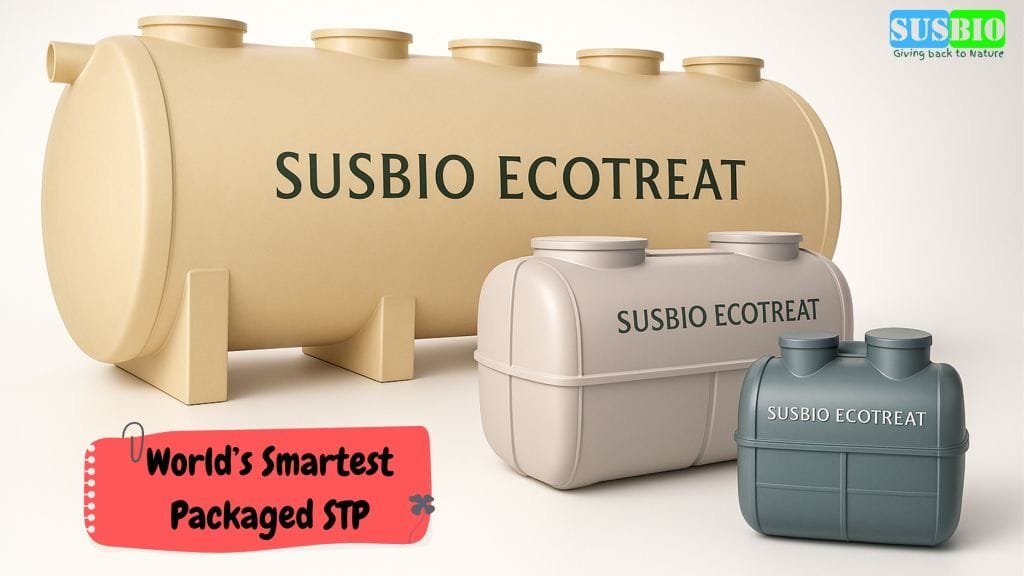
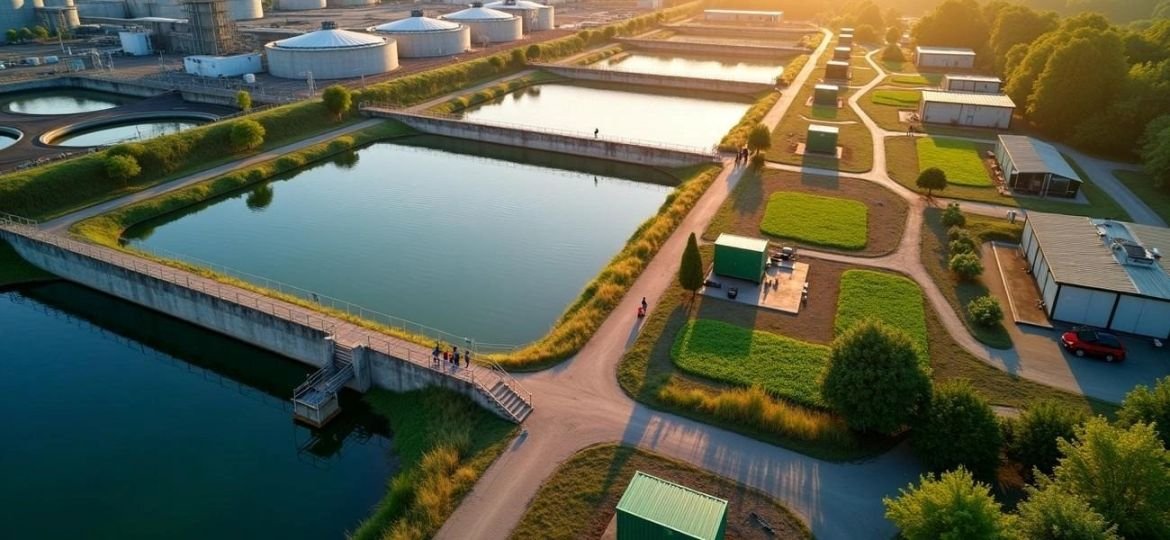
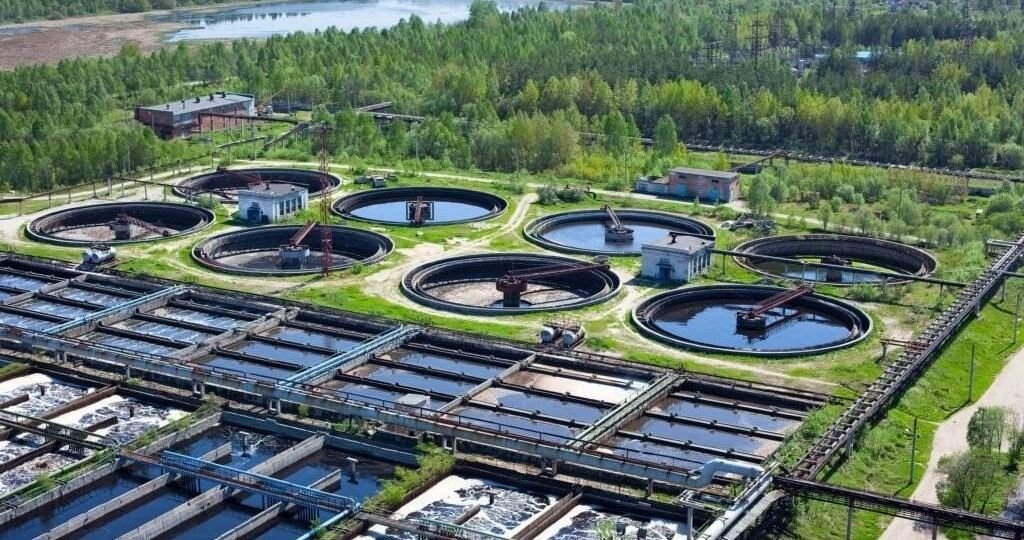
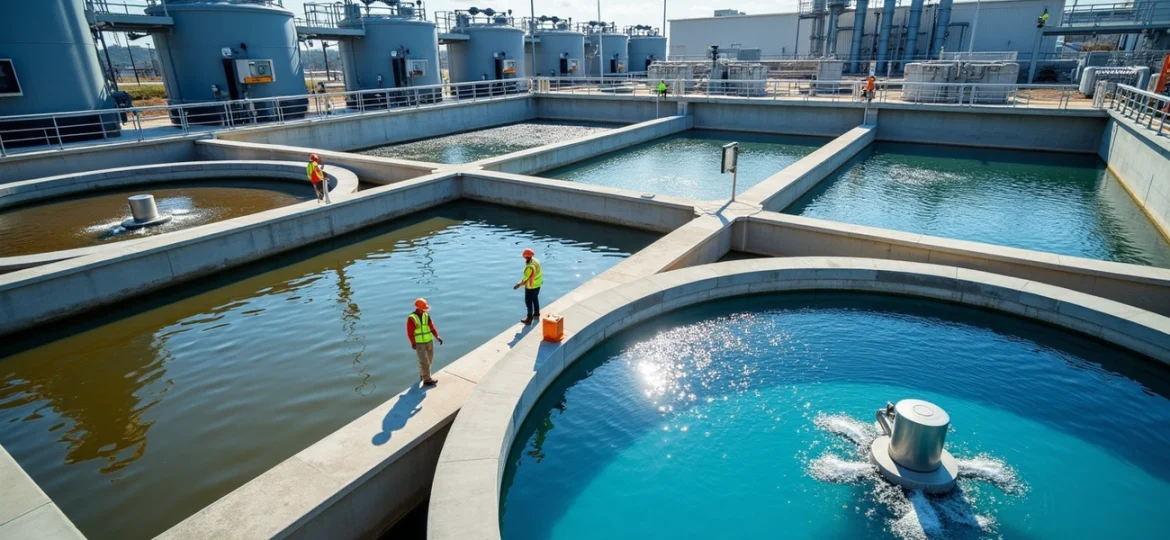
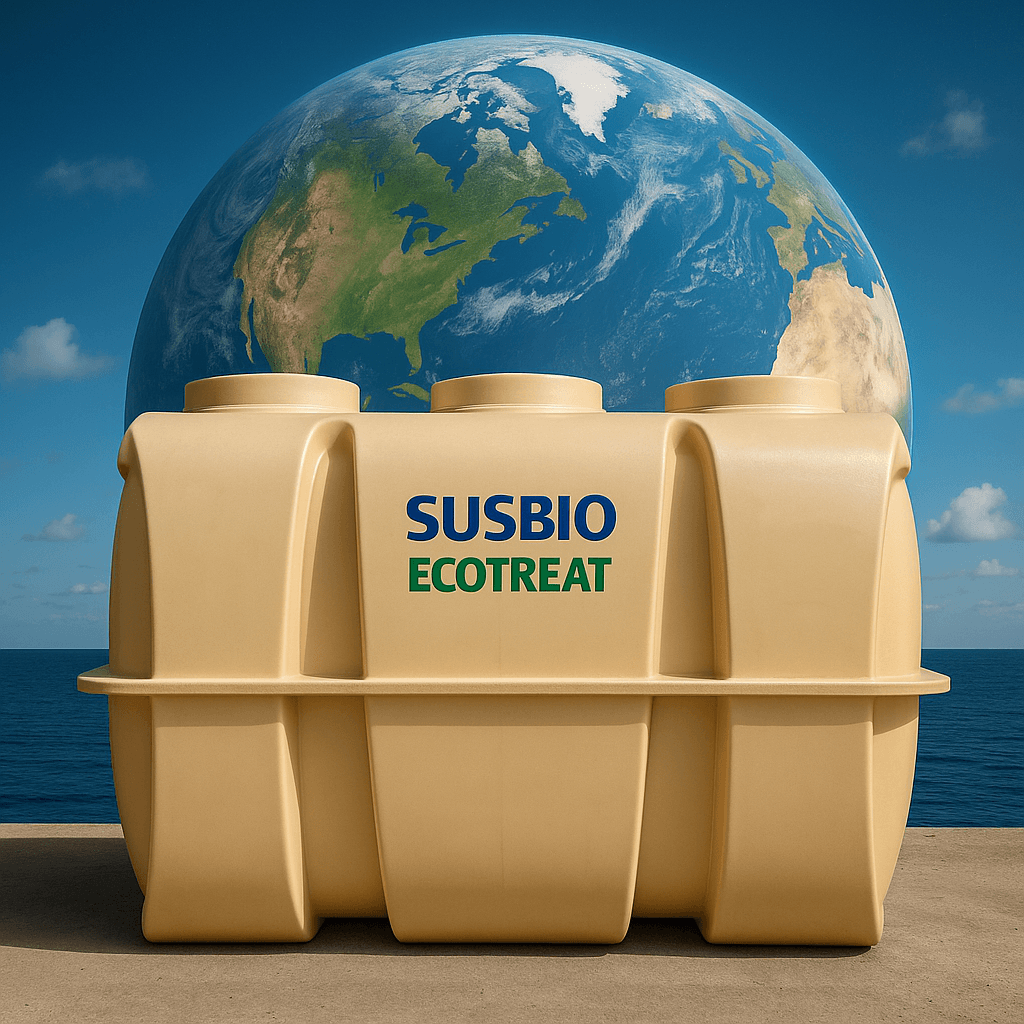
9 Comments
[…] When it comes to wastewater management, choosing the right sewage treatment plant (STP) is crucial. The debate between packaged sewage treatment plants and traditional STP systems continues to evolve as technology advances. In this blog, we’ll explore the fundamental differences, pros, and cons of both systems, while highlighting why SUSBIO ECOTREAT stands out as the best choice for packaged sewage treatment plants. […]
[…] to traditional sewage treatment methods. In this ultimate guide, we’ll explore what packaged sewage treatment plants are, how they work, their benefits, and why they are the future of sustainable wastewater treatment. […]
[…] problem of wastewater pollution, adopting efficient treatment solutions has become essential. Packaged sewage treatment plants are compact, self-contained systems designed to treat wastewater in areas where conventional […]
[…] the perfect blend of innovation, efficiency, and environmental responsibility, making it the best packaged sewage treatment plant in India. Here’s why SUSBIO is the industry […]
[…] ease of installation and maintenance further distinguishes the SUSBIO ECOTREAT as the best packaged STP on the market. Its prefabricated design allows for a quick, hassle-free setup, eliminating the […]
[…] Let’s dive into the significance of wastewater treatment, explore the advantages of adopting packaged STPs, and understand why SUSBIO ECOTREAT stands out as the ultimate […]
[…] ECOTREAT is a revolutionary packaged sewage treatment plant designed to meet the […]
[…] name in wastewater treatment technology, offers an innovative solution with its SUSBIO ECOTREAT packaged Sewage Treatment Plant (STP), designed to meet the growing needs of residential, commercial, and industrial […]
[…] its cutting-edge technologies. SUSBIO’s flagship product, SUSBIO ECOTREAT, is a state-of-the-art packaged sewage treatment plant (STP) designed to cater to diverse […]